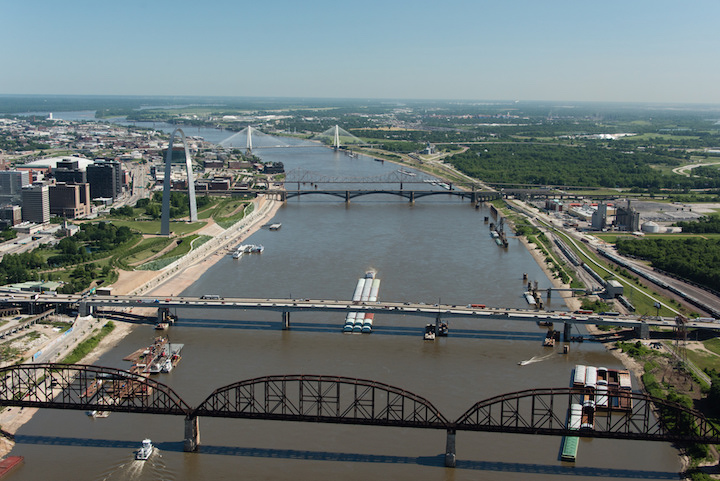Aimee Andres, executive director, Inland Rivers, Ports and Terminals, Inc. (IRPT), says U.S. inland river ports and terminals are recovering from the 2019 flooding, but need major new investments including support for moving more containers on barges to the Port of New Orleans and other Gulf Coast ports.
“We are oftentimes a forgotten yet vital piece of the transportation system,” Andres told AJOT in an interview.
She added: “When you look at damage to the river system, you consider needs, such as:
Higher U.S. Army Corps of Engineers funding to rehabilitate the levees that were destroyed (and before the next big flood event happens).
Physical infrastructure needs to rehabilitate port and terminal equipment that was damaged, i.e., docks, moorings, railroad, ballast, cranes, etc.
Higher funding for the Coast Guard and an efficient way to put the funds to use to mark a safe channel (aids to navigation were displaced).”

The result is: “We all advocate for higher funding for the federal agencies that operate and maintain our river infrastructure (U.S. Army Corps of Engineers and U.S. Coast Guard). There are multiple grant programs out there and available to public ports to rehabilitate the physical infrastructure within their control.”
U.S. Inland River Ports
| River Name | 2019 Tonnage Total | Number of Public Ports |
| Red River | 77,197,750 | 5 |
| Arkansas | 110,322,492 | 5 |
| Missouri | 44,153,290 | 3 |
| Illinois | 37,281,916 | 6 |
| Ohio | 2,238,463,180 | 19 |
| Source: Inland Rivers, Ports and Terminals | ||
What is missing “are the funds available to private terminals whose property or equipment was damaged. Remember, most public ports are landlord ports, meaning they do not operate their transload facility. The majority of transload facilities in the country are private terminals that own or lease their land. It’s the cargo they handle that provides cleaner air, safer roads and less congestion on other modes of transportation.”
Andres sees a major growth area for the inland ports in moving more container loads on tug barges, but feels the trend is not catching on fast enough: “It is not going as well as we would wish.”
She said that containers on barges could shift many truckloads off congested highways and on to the Mississippi River, transporting containers to and from the Port of New Orleans and other U.S. Gulf Coast ports.

This could be a big business for many inland ports if they had more support from export and import shippers as well as from major ocean carriers who could benefit from lower waterborne transportation costs compared to long-haul trucking.
To accommodate this new market, the inland ports and terminals will need more advanced cargo-handling capacity. This means new ship to shore cranes, forklifts and top handlers, she said.
To provide additional support for ports and terminals, Andres wrote legislation that Congress enacted to set aside grant monies to invest in upgrades at inland terminals and ports. Congress allocated $41 million in grants for such upgrades that are administered by the U.S. Maritime Administration (MARAD).
IRPT is headquartered in St Louis, and has nearly 400 members that include ports, terminals and shippers. An inland public port will typically have a rail connection, a dock to berth tug/barges and the land to lease to a private terminal. The private terminal utilizes a warehouse, cargo handling equipment including perhaps a conveyor belt. It will also have a crane, tractor, truck and a push boat to move barges.
Major waterborne cargoes that transit IRPT ports and terminals are: coal, corn, soybeans, steel, and iron.

